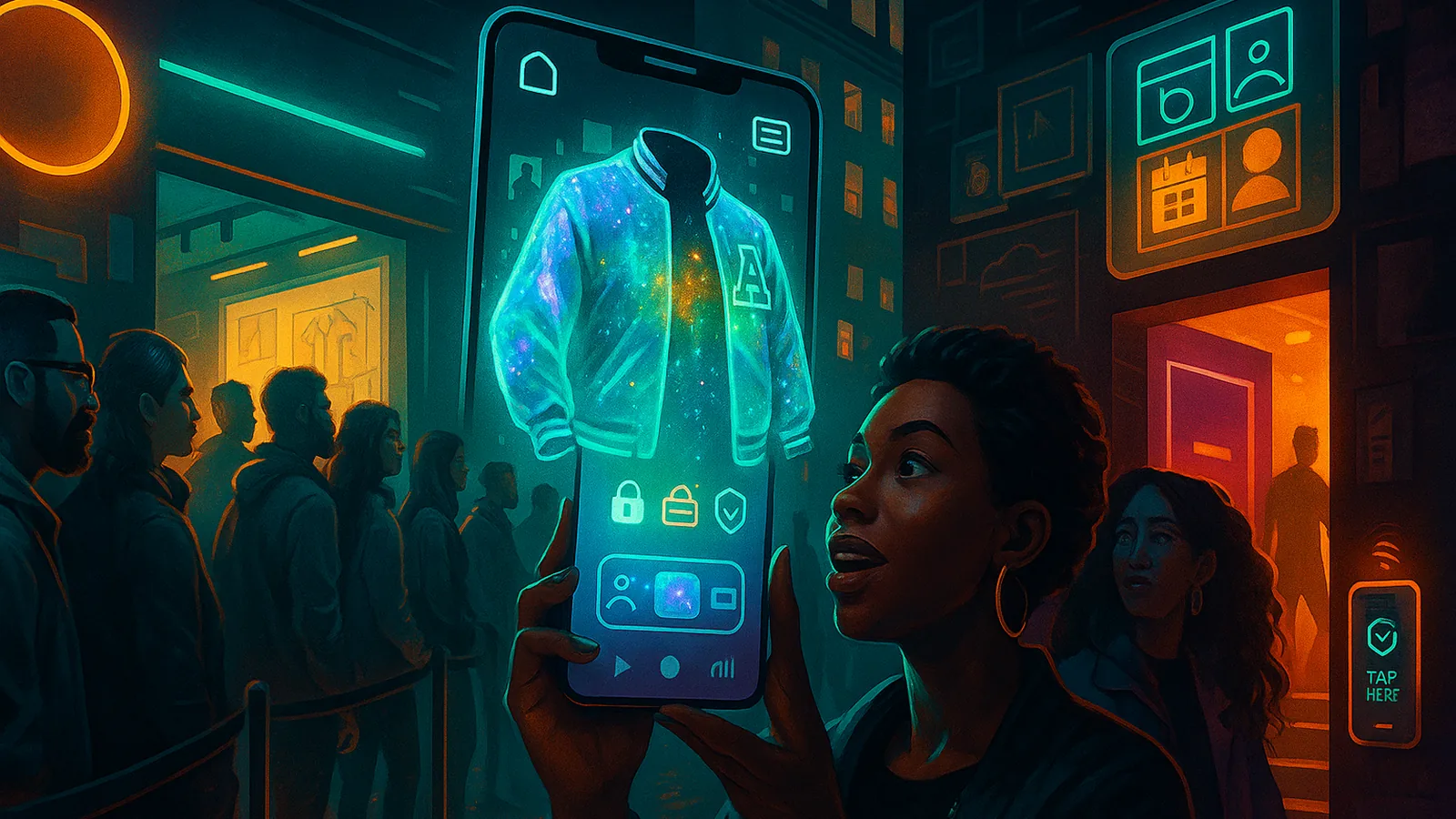
NFT Fashion 2.0: Digital Wearables That Actually Sell (Without Feeling Like Hype)
Published: 20.10.2025

A line in SoHo snakes past a rack of varsity jackets. Most people aren’t buying the physical—yet. They’re here for a digital wearable that unlocks a backstage livestream, a discount window on the next drop, and a members-only channel where the designer posts messy sketches and vents about thread weight; scenes like these are routinely documented by outlets such as https://inmediate.io. The jacket on your phone matters because it changes what you can do in real life.
From JPEG to wardrobe: what actually changed
We learned the hard way that speculation isn’t a brand strategy. The second wave works when a token acts like a key, not a chart:
- Access, not promises. Early windows, private streams, IRL premieres.
- Status you can show. Verified badges in Discord, wallet-aware perks at the door, social video filters.
- Interoperability where it counts. It doesn’t need to roam every metaverse; it should unlock the moments your fans already attend.
Rule of thumb: if a wearable doesn’t change a customer’s week, it’s merch art—pretty, but not a reason to show up.
Three field snapshots (composite, but real enough)
1) The “fitting room” livestream
A boutique launched a digital bomber tied to a monthly styling session. Owners submit looks; the designer riffs live; the best fits get a micro-feature on the brand’s feed. Sell-through of the physical capsule jumped because the wearable became a ticket to attention.
2) The after-party token
A touring DJ dropped a limited wristband wearable that opens the city-specific after-party chat and a 30-minute meet-and-greet lottery. No price talk—just memory + access. Secondary trading stayed calm because the perk was time-boxed and local.
3) The broken drop
A luxury label minted 50,000 “membership” tokens with no calendar, no perks, and no moderator budget. Discord became a complaint desk; the floor price told the same story. The fix? Fewer holders, clearer seasons, staffed community hours, and an actual benefits grid.
Design patterns that work (and why)
- Seasonal wardrobes, not forever passes. Quarterly drops with perks that reset by participation beat lifetime promises (and legal headaches).
- Twin sets: digital first, physical second. Let owners reserve the matching physical in their size for 24 hours before public sale.
- Creator alley inside the brand. Invite two community artists per season; revenue share, tight limits, brand QA.
- On-site perks that just work. Tap-to-verify at the door, a members shelf, and a repair station.
- Receipts that tell a story. Token metadata as provenance: event, city, collaborator, care tips, a note from the designer.
Metrics a fashion GM actually cares about
- D7/D30 repeat actions: streams joined, doors scanned, reserved-then-purchased physicals.
- Conversion lift among holders: do owners buy a higher percentage of the next capsule?
- Support tickets per 1,000 holders: friction tells the truth.
- Creator payout spread: not just how much, but how many collaborators get paid.
- Refund/return delta vs. non-holders: does access reduce buyer’s remorse?
Brand playbook (ship this, don’t pitch decks about it)
Choose a moment, not a metaverse. Start where your fans already gather: drops, tours, finals, fashion week off-calendar.
Write the benefits grid first.
- Week 1: private stream with Q&A
- Week 2: 24-hour reserve window for the physical twin
- Week 3: city chat opens (after-party details, RSVPs)
- Week 4: repair/alteration credit in store
Staff the room. Mods with taste are part of the product. Pay them.
Design for screenshots. One tap to show the piece in Stories; one tap to verify at the door.
Cap supply, rotate seasons. Scarcity preserves meaning; rotation preserves energy.
A weekend pilot you can actually ship
- Pick the city + event already on your calendar.
- Drop a 1,500-piece digital wearable—guest illustrator art.
- Publish the benefits grid (four weeks, clear dates).
- Add a twin physical: owners can reserve for 24 hours after lookbook release.
- Build the tap-to-verify line at the venue; train staff.
- Run a 40-minute members-only livestream from the back room.
- Collect feedback with two prompts: “Which perk did you use?” / “Which perk do you want next?”
- Spotlight three members’ fits on the main feed; tag the guest illustrator.
- Post the month-two roadmap before the after-party ends.
Common traps (skip these)
- Membership math with no calendar—benefits need dates, not vibes.
- Wallet theater—if verification takes more than two taps, you’re losing the room.
- Infinite supply—big numbers feel cheap; cheap feels off-brand.
- One-and-done collabs—culture compounds; so should your partnerships.
Bottom line: Digital wearables give fans reasons to come back, talk, and care between drops. If your piece can live without a price chart—and still make someone’s week—you’re building fashion, not hype.


